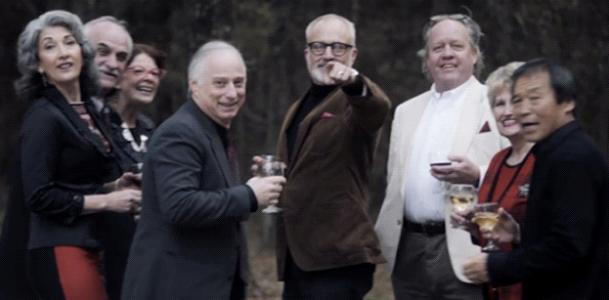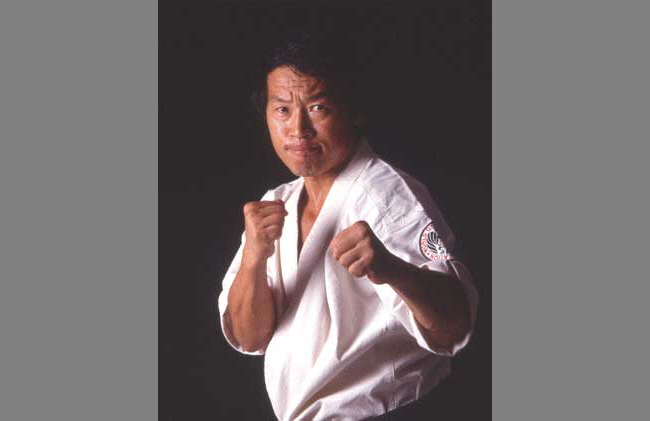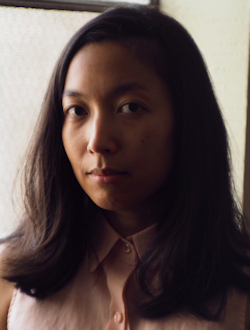
By Guest Contributor: Melissa Phruksachart (@mphruksachart)
Though Jordan Peele’s Get Out has been primarily read (and marketed) as an excoriation of white liberalism, Peele actually asserts the multi-racial nature of white supremacy through the character of Hiroki Tanaka (Yasuhiko Oyama), a Japanese man.
This post contains spoilers of the movie “Get Out”. Please read on with caution.
In Get Out, Tanaka is one of the party guests at the gathering hosted by the Armitages, the WASP-y parents of Rose, the white woman whom protagonist Chris is dating. In the scene pictured above, Chris makes his way through the crowd as white guests accost him with questions about his size, speed, and physical potential, revealing themselves to be obsessed with his status as flesh.
Only one person, Tanaka, engages Chris on a more philosophical level: “Is the African American experience an advantage or disadvantage?”
There’s plenty to cringe at here: there is no singular African American experience, for one; and it’s simplistic to assert that people experience race as an either/or. But the audience is invited to read the query as blazingly tone-deaf in light of the microaggressions Chris endures (and the outright aggressions he will endure later in the film).
Tanaka’s guileless question is positioned to nudge at the complicity of Asians and other non-black people of color in anti-black racism. In this sense, Peele suggests that the racial divide operates not merely between black and white, but between black and not-black. Though Asians aren’t white, they aren’t innocent, either, and they aren’t automatically aligned with black people. Peele points here to a long history of Asians enriching themselves at the expense of black people: whether it’s Asian Americans who protest affirmative action because it gives spots to black and brown students that a “deserving” Asian student might take, or the everyday Asian Americans who uphold structures of white supremacy through their work, thoughts, and actions, without interrogating anti-blackness.
However, Peele does this by illuminating the figure of the “Asian” as a foreigner: Tanaka speaks with a halting accent and asks his question with the deference of a learned scholar or sensei. While rightly reminding us of the way in which white Americans will embrace foreignness over U.S. black culture, Peele also reifies the image of the Asian as the forever-foreigner and erases more complicated histories of Asian American struggle.
The twist here is that the actor who played Tanaka, Yasuhiko Oyama, is also a world-renowned martial artist and founder of the World Oyama Karate Organization. (Get Out was filmed in Fairhope, AL, the same state that houses Oyama’s dojo in Homewood.) Peele is an avowed MMA fan, and Key and Peele has featured multiple MMA-based sketches. If we look more closely, we see Peele nods towards intertwined histories of Afro-Asian collectivity. Recall that during dinner, Rose’s brother Josh asks Chris if he’s an MMA fan. The two briefly discuss the merits of jiu jitsu, a Brazilian form of Japanese judo brought to Brazil in the early 20th century by Japanese teacher Esai Maeda.

Josh reminds Chris that the key to jiu jitsu is not physical strength, but mental acuity: staying three or four moves ahead of your opponent. During the film’s climax, Josh attempts to prevent Chris from escaping by wielding a lacrosse stick (the ultimate white-boy sport, made even more so by its appropriation from Native Americans), but Chris eventually overcomes him through the jiu jitsu spirit Josh had earlier remarked upon: as Deadspin’s Tom Ley noted, “Chris remembers the psychopath brother’s speech about jiu jitsu and being three or four moves ahead. When they are wrestling in the foyer, the brother keeps kicking the door closed when Chris reaches to open it. When Chris reaches for the door the fourth time, he’s ready to stab the brother in the leg with the letter opener as soon as he kicks the door.”
We might see jiu jitsu as the twenty-first century answer to the now-campy karate of decades past. Asian martial arts like kung fu and karate were popularized in the United States after World War II and saw their heyday in the 1970s with film stars like Bruce Lee (recall that Lee’s first U.S. feature, 1973’s Enter the Dragon, co-starred African American martial artist Jim Kelly). The chopsocky aesthetic was especially embraced by blaxploitation film culture, giving us Black Belt Jones, T.N.T. Jackson, Black Samurai (now in development as a television show starring Common), and Carl Douglas’s soul-disco earworm from 1974, “Kung Fu Fighting.” Black power drew on elements of Asian culture and thought, just as American “Orientals” drew on the rhetoric of black power during the formation of the Asian American movement.
What can we glean from all this? I’d argue that the Asian character in Get Out is both critique and homage: Oyama’s appearance is read by the audience as a critique of Asian complicity in anti-black racism, but Oyama’s status as revered teacher, as well as Chris’s use of jiu jitsu at a key moment in the film, suggests that Peele is also acknowledging the potential of Afro-Asian alliances – if Asians would only show up on the right side.

Melissa Phruksachart (@mphruksachart) is an Assistant Professor and Faculty Fellow for the Department of Cinema Studies at New York University.
Learn more about Reappropriate’s guest contributor program and submit your own writing here.
